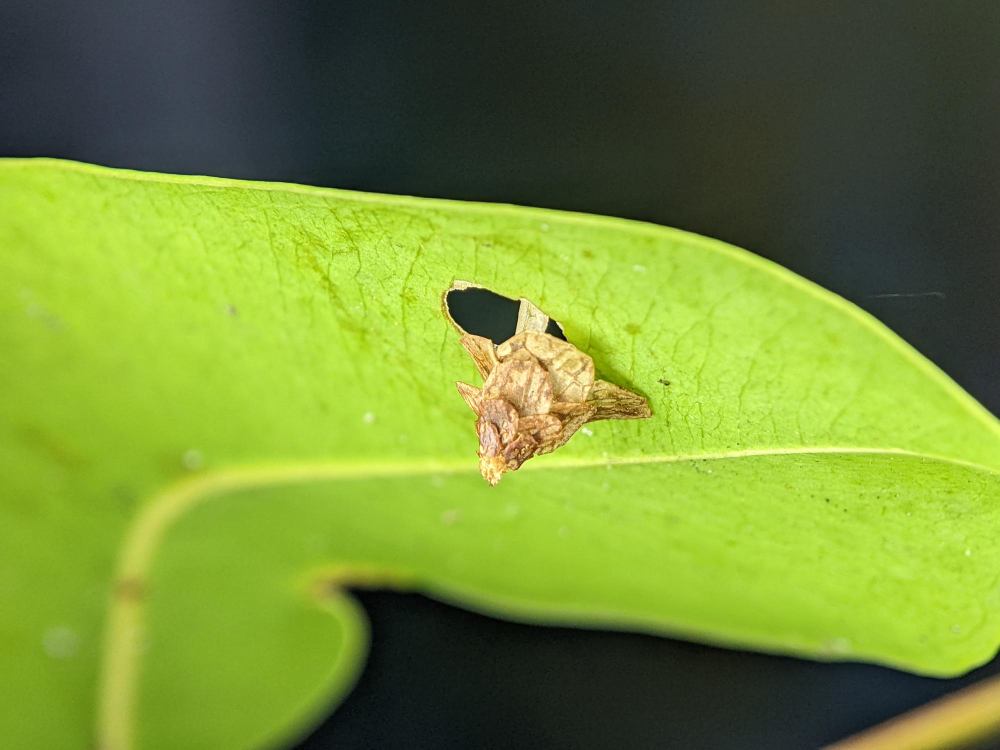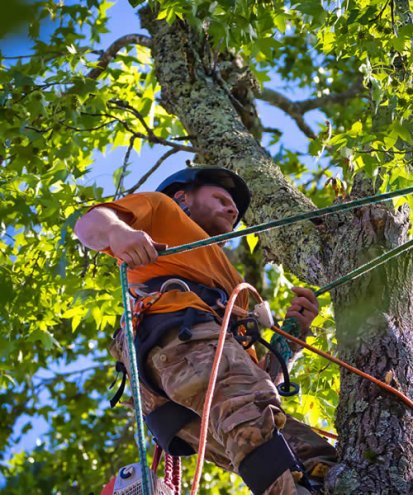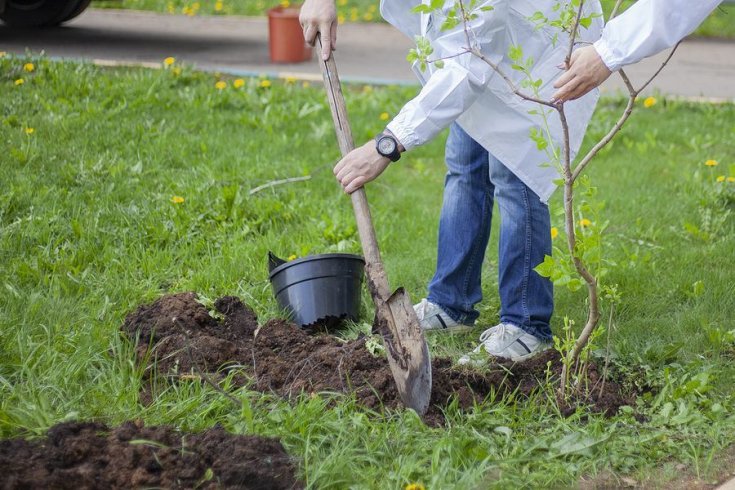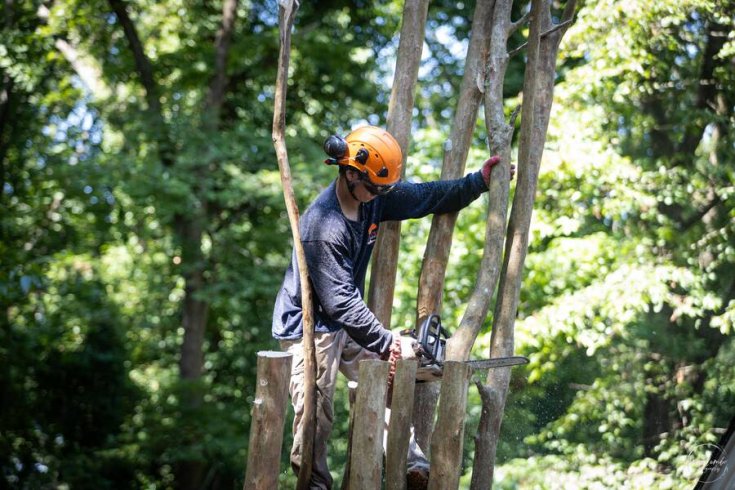Menu
Bagworms are a type of moth larvae that can wreak havoc on trees and shrubs, causing severe damage and premature tree removal projects. Despite their small size and discreet appearance, these pests pose hidden dangers that can harm the health and aesthetics of your property’s greenery. As a property owner, hiring a tree care company for routine inspections can prevent infestation and subsequent repercussions. If you suspect a problem with your trees, the experts at Driscoll Tree Service can help. Let’s look at the various dangers associated with bagworm infestations and the strategies for prevention and control.

The most obvious danger bagworms pose is foliage damage on trees and shrubs. Bagworm larvae feed ravenously on the leaves of host plants, compromising the overall health of the plant. Severe infestations can cause stunted growth, branch dieback, and even tree removal in case of death. Certified arborists can detect signs of deterioration early and recommend effective solutions to prevent extensive damage to foliage.

Besides foliage damage, bagworm infestations can stress and weaken the host plant. As the larvae consume nutrients from the leaves, the tree’s ability to photosynthesize and produce energy is affected. Once the immune system is ultimately compromised, the tree becomes more susceptible to other pests, diseases, and environmental stressors. Stressed plants are less resilient and may struggle to recover from infestations, leading to long-term decline.
Bagworms can lower the aesthetic appeal of trees and shrubs, especially in ornamental landscapes. The presence of unsightly bags hanging from branches and the sight of defoliated foliage can also diminish the beauty and value of your property. We recommend routine tree trimming and pruning of infested trees and shrubs to enhance plant health and the overall esthetic of your landscape. A reputable tree care company can employ effective control measures, maintaining the aesthetic integrity of your outdoor space.
Another hidden danger of bagworms is their potential to spread to other plants within the landscape. Adult female bagworm moths can disperse over considerable distances, laying eggs on various host plants as they search for suitable sites. This can cause infestations throughout the landscape, affecting multiple trees and shrubs. Routine inspections and maintenance by a tree service expert can contain the spread of bagworms, ensuring minor signs of pest damage are addressed.
Beyond the immediate threats to plant health and aesthetics, bagworm infestations can also incur economic costs for property owners. The expenses associated with treating and controlling infestations, including the purchase of insecticides, hiring professional tree service providers, and replacing damaged plants, can add up quickly. Also, the long-term effect of reduced property value and diminished curb appeal can add to the financial burden of bagworm infestations. Investing in preventive measures like routine tree pruning and early intervention can help mitigate these economic costs.
Bagworms may go undetected at first, but their presence can have long-term consequences for the health, appearance, and value of your landscape. Contact us at Driscoll Tree Service and talk to our arborists about the hidden dangers of bagworm infestations for effective prevention and control measures. We provide comprehensive services, including tree pruning, fertilization, removal, and tree trimming, preserving the beauty and vitality of your outdoor spaces.

If you’ve lived in Metro Atlanta for a while, then you know we love our trees. Drive through Decatur, Marietta, or Roswell and you’ll see streets shaded by towering oaks, pines, and maples. For most of us, those trees aren’t…
Read More
Will Pruning a Diseased Tree Help It Survive? Detecting signs of deterioration in your trees can be quite frustrating, especially if irreversible. Luckily, scheduling routine maintenance inspections with a professional tree care company helps detect trivial signs of infection or…
Read More
Best Trees to Plant for Shade A good shade tree is a must if you live in an area where the temperatures tend to rise in the spring and summer. Choosing the right trees can not only offer a cool…
Read More
The Best Way to Remove a Tree Stump When a tree is cut down for whatever reason, the stump left behind is not just an eyesore but also a safety hazard on your premises. Waiting for the stump to decompose…
Read More
4 Situations That Require a Tree Removal Service Trees are a valuable addition to any landscape and play a vital role in the ecosystem. There are many benefits we get from trees, such as shade, curb appeal, and comfort, among…
Read More.jpg)
5 Resilient Tree Species that Benefit People and the Planet Trees around the world have been celebrated for thousands of years. These magnificent entities offer many benefits to the planet, drawing people to connect with them. As a property owner,…
Read More
Should You Worry About Lichen on Trees? Lichens are fascinating and often misunderstood. When homeowners notice these growths on the bark of trees, it raises concerns about the health of their yard. If you notice lichens on your trees, consult…
Read More
What Happens If Tree Roots Freeze? Wintertime isn’t just tough on plumbing and roofing; it is also brutal on trees. Tree roots can freeze when soil temperatures drop below 15°F or the water within the soil surrounding the roots freezes…
Read More
Trees are a major part of our landscape and lifestyle in Metro Atlanta and the surrounding areas. They provide shade, boost curb appeal, and even raise property value. But like anything else on your property, they need regular care. Tree…
Read More
Trees are beautiful, strong, and bring life to your yard - but only when they’re well cared for. Regular tree trimming keeps your trees healthy, prevents branches from growing too close to your home, and reduces the risk of falling…
Read More